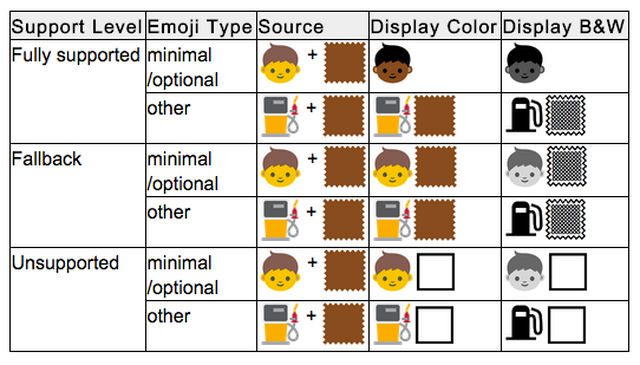SUMMARY
This is AI generated summarization, which may have errors. For context, always refer to the full article.

WASHINGTON, DC, USA – Those odd characters on your emails and text messages are about to see more diversity – sending a message that humanity comes in many colors.
New draft guidelines released Tuesday, November 4, by the computing industry consortium Unicode offer a broader range of options for emojis, the ideograms used for various visual messages sent online.
“People all over the world want to have emoji that reflect more human diversity, especially for skin tone,” said the latest draft released by Google’s Mark Davis and Apple’s Peter Edberg.
“The Unicode emoji characters for people and body parts are meant to be generic, yet following the precedents set by the original Japanese carrier images, they are often shown with a light skin tone instead of a more generic (inhuman) appearance, such as a yellow/orange color or a silhouette.”
The new guidelines offer characters “based on the six tones of the Fitzpatrick scale,” a standard used in dermatology.
Emojis were initially developed in Japan but later adopted into global computing standards for use in electronic messages around the world.
The symbols may include anything from a yellow heart to a lollipop, but many are based on smiley faces.
The proposed changes still need approval from the Unicode consortium, but if adopted could take effect in mid-2105.
“Of course, there are many other types of diversity in human appearance besides different skin tones: Different hair styles and color, use of eyeglasses, various kinds of facial hair, different body shapes, different headwear, and so on,” the engineers wrote in the document.
“It is beyond the scope of Unicode to provide an encoding-based mechanism for representing every aspect of human appearance diversity that emoji users might want to indicate.” – Rappler.com
Add a comment
How does this make you feel?
There are no comments yet. Add your comment to start the conversation.